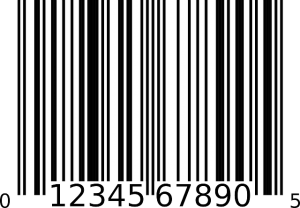Let’s start by decoding the letters: SKU stands for Stock Keeping Unit. Put simply, a SKU is a code or number that is used internally within a business to keep track of the inventory. Each code is unique to the product. You’ll find a SKU code at the top of a bar code. You will probably already be familiar with a UPC, or a Universal Product Code, which are the series of numbers you’ll find at the bottom of any bar code or any product.
So, what exactly is the difference between these codes? And why have two? A UPC is, as you might expect, universal. It is made up of numeric digits identifying the item and its manufacturer and it is non-specific to your business.
A SKU code, on the other hand, has a lot more to offer your business analytics specifically. A SKU code is made up of letters and numbers, operates internally, and, most importantly, it identifies traits of the product. Keeping track of SKU codes, and therefore product traits, can help you understand trends and sales within your business and also assists you in keeping a good eye on your inventory.
Here is a bar code detailing examples of a SKU code and an UPC.

How do you construct a SKU coding system?
Because SKU codes are used internally, it is totally up to you as to which way you choose to order your items using these codes. There are a number of things that are worth keeping in mind, however, as you design your system.
– Consider the amount of stock you have. The smaller it is, the simpler your tracking can be. Perhaps tracking by age that the product is aimed towards, for example, is sufficient if your stock is small. If your stock is larger, you may want to track it by more specific categories, using things like size and gender in your system.
– Think about what is important to the customer. If your customers tend to ask for specific designs or colours, for example, make that a priority category to include at the beginning of your SKU code.
– Make sure your digit sequence is unique. By ensuring your sequence is original, you can be sure that the numbers aren’t confused with any other codes, and that you can effectively track your inventory. You’ll want to typically use between 8-12 characters and make sure each number and letter has a meaning related to the categories you have chosen.
– Decide on which inventory system to use. There are a number of options here. If you already use a point-of-sale system, you can usually set up a SKU code structure within this. If you have a smaller inventory, then you can also choose to set-up one by hand or use some online generators to help.
Why are SKU codes useful?
– You can accurately and effectively track your inventory. This allows you to keep track of the availability of your products on a continuous basis. With this in place, you can order new merchandise when necessary, so it never goes out of stock.
– SKU codes help you to anticipate sales. By keeping a close eye on your inventory and noting the changing stocks of your merchandise, you can better anticipate seasonal sales of items in a way that would not have been possible beforehand.
– You can accurately learn which items generate the most profit. This information is invaluable when it comes to creating effective displays, as well as knowing which products to promote and which to discontinue.
– Inventory awareness can improve the satisfaction and loyalty of your customers. If a customer wishes to order an item that is out of stock you can use SKU codes to quickly reorder this for them, leading to satisfied customers.
– Tracking your items using SKU codes allows you to give new or similar suggestions to customers if a product they are looking for is out of stock.
Overall, categorising and tracking your stock using SKU codes is an effective move for your business. These unique internal codes can help you keep track of your stock and analyse sales trends in order to enhance profits and improve customer satisfaction.




